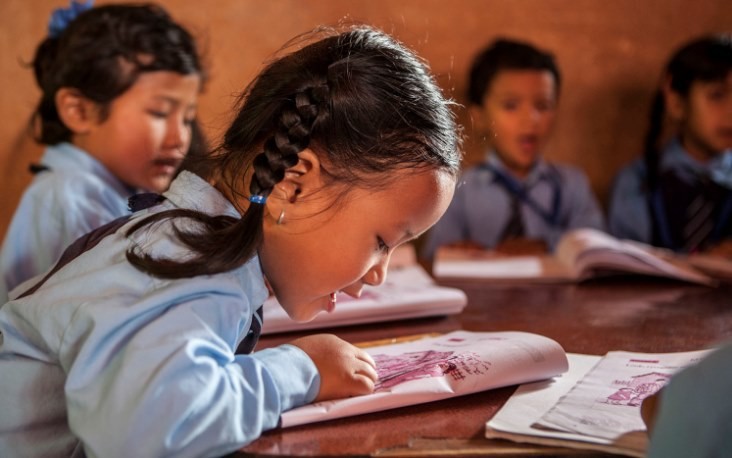Speeches Shim

Despite a decade-long conflict and other political challenges, Nepal has made remarkable progress in expanding learning opportunities for children and adults. Since 1990, net primary school enrollment rates have increased from 64 to 96 percent, with near gender parity. However, the quality of education remains low, as are secondary school completion rates, and the overall literacy rate hovers around 65 percent, with much lower literacy rates among women and traditionally marginalized castes and ethnic groups.
USAID has taken a leading role in promoting early grade reading on the national education reform agenda and works closely with the Government of Nepal in rolling out a national early grade reading program. USAID supports the Nepali government in improving the quality of education, restoring access to education for children affected by the April 2015 earthquake, and providing safe learning environments for adolescents so that they can finish school.
Quality of Education
USAID emphasizes improving early grade reading as the foundation for future learning. A USAID-supported early grade reading assessment in 2014 showed that 19 percent of third-graders could not read a single word of Nepali, while less than 13 percent of them were able to read with fluency and comprehension. Working together with the Ministry of Education, USAID will help one million young children acquire strong reading skills in grades one to three across 16 districts of Nepal, with a particular focus in improving literacy among children who are not native Nepali speakers.
Access to Education
In response to the April 2015 earthquake, USAID supported the Government of Nepal to resume education services by establishing more than 1,000 temporary learning centers for over 93,000 students, and providing learning and recreational materials, temporary latrine and handwashing facilities, and training for teachers to provide counseling for students. USAID will construct 250 transitional learning structures and train communities to use data to make informed decisions on their reconstruction plans.
Safe Learning Environments
USAID and UNICEF are implementing the “Zero Tolerance, Gender-based Violence-Free Schools” project to reduce the prevalence of school-related gender-based violence and promote equitable learning outcomes for adolescent girls and boys. The Zero Tolerance project operates in 200 schools in four districts in Nepal’s central Terai region, where child marriage is more prevalent. By raising awareness on gender-based violence at the school and community level, increasing the reporting of incidents, and strengthening school linkages with community-based service providers, the Zero Tolerance project promotes safe learning environments to help improve students’ education outcomes.


Comment
Make a general inquiry or suggest an improvement.